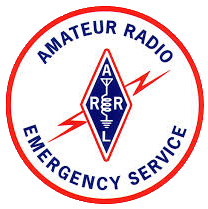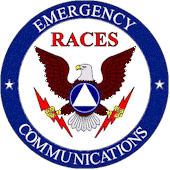Standardized Radio Memories
- Details
- Hits: 4743
ARES, RACES, SATERN, MARS, and virtually every other Amateur Radio organization will have a plan for nets and tactical activities, including a range of frequencies (spanning several bands) to be used for different modes of operation.
Just as there are a range of entities using a range of frequencies across many bands implementing multiple modes, a typical Amateur Radio Operator will own a collection of radios with a variety of differing capabilities. While not all radios will operate across all the bands and operate in all the modes, there is often quite a bit of overlap of functionality.
Prowords
- Details
- Hits: 6555
Like the use of standard phonetics, the use of standard Procedure Words (usually referred to as PROWORDS) helps to ensure the clear conveyance of information between radio operators.
Like phonetics, there is a standard set of prowords used in communications, increasing the probability of understanding even when hearing only a part of the proword during noisy conditions.
Some prowords are more commonly used than others, and some prowords, while more expedient, can be a little confusing because they aren't commonly used in Amateur Radio.
Here are some of the most common prowords you'll hear on formal nets, especially when passing formal traffic:
Wilderness Protocol and LiTZ
- Details
- Hits: 7431
The Wilderness Protocol, like many Amateur Radio practices, is not part of FCC regulations or law, merely a generally agreed upon practice. The purpose of the protocol is to provide a way for operators outside of repeater range and in need of assistance to make contact with other operators to request assistance.
Although it could, and should, be practiced under any conditions, it was originally designed as a tool for hikers, campers, and those who work in wilderness areas.
Operators, especially those in wilderness areas, would monitor calling frequencies on various bands (146.52 MHz, 52.525, 223.5, 446.0 and 1294.5 MHz) at the top of the hour. Ideally listeners would monitor from a few minutes before
Vanity Call Signs
- Details
- Hits: 15951
Amateur radio operators are issued call signs by the FCC upon qualifying for their Technician license, and have the option to be issued new call signs that reflect their new class when they upgrade to General or Extra. The form of call sign is limited by license class, where higher class of licenses allow simpler/smaller call signs. For instance, a Technician class licensee may be issued something like KX4XTT (often referred to as a two by three, two letters before the number and three after); however an Extra class licensee may have a call sign like W4BK (often referred to as a one by two). There are various call sign formats between these extremes, often limited by license class. You can view the "rules" by going to this link and clicking on "Sequential Call Sign System".
Handheld Radios As Go-Kit
- Details
- Hits: 6744
The most basic “go-kit” item in the Amateur Radio Operator's bag of tricks is the Handheld Transceiver (HT). No, HT doesn't stand for handy-talky. While most of us own several HTs, and they are useful tools, especially when near repeaters, we also know that the HT, out of the box, makes for a pretty poor emergency station. The rubber-ducky antenna and lower voltage batteries often supplied with the radios, along with the lower power output HTs have are challenges to be overcome.
Let's take a look at some things that can improve HT performance:
- Purchase a higher gain antenna for the HT. The original manufacturers equipment (OEM) antenna that came with your HT is little more than a dummy load. Many aftermarket antenna manufacturers make replacement antennas for just about every HT. Talk to others with the same HT as yours and find out what they are using. A step up from that is a mobile antenna or even a base station antenna on a push-up pole. Antenna gain and height are the keys to overcoming marginal operations.
Power Connectors
- Details
- Hits: 16459
One of the interesting things about Amateur Radio is the nearly universal use of PL-259 connectors for base and mobile radio gear, at least that at or below the UHF end of the frequency spectrum. We typically utilize 50ohm cable, even if there are variations of loss across the frequency spectrum, diameter, etc.
One area we see very little standardization, especially across brands, is power connections. Almost all mobile and base gear runs off 12 volts, yet there are a multitude of connectors, having little more than the red for hot and black for ground color coding.
In addition, we will connect that equipment to a variety of sources, some making it obvious which connector is hot and which connector is ground. Others, like car batteries, often require a close look. Also, in some instances the wires are always properly color coded.
Because of these variables we can almost be certain, that if we tinker, change, or rearrange our radio gear very much, we WILL accidentally hook the wires up wrong and let the smoke out of some valuable piece of radio gear.
Anderson Powerpole Connectors
- Details
- Hits: 7470
Setting up ad-hoc operating locations can be a challenge, especially when a variety of different radios and peripherals are going to be utilized. Seldom are components interchangeable between brands, and often not even amongst radios from the same manufacturer. Microphone, antenna, and power connectors often vary. Seldom is there a reason to interchange microphones, and most all of us have the stash of adapters to convert antenna connections from PL-239 to N or SMA or BNC. But power connections can present more of an issue.
Different radio manufacturers use different power connectors. Power supplies, while newer ones have Anderson Powerpole (APP) connectors built in, often just have posts with thumbscrews, banana plugs, and a variety of others.

In the hustle of setting up radios, the greatest challenge, and potential hazard, is hooking up power.
Severe Weather Awareness Week
- Details
- Hits: 21966
Various National Weather Service offices sponsor severe weather weeks, and the Peachtree City office usually hosts theirs during the first or second week of February.
Each day covers a different topic related to weather safety. As potential resources during severe weather as storm spotters, safety at home must always come first, and is a necessary prerequisite to being able to spot and participate in severe weather nets.
This year's topics are: Family Preparedness, Thunderstorm Safety, Tornado Safety, Lightning Safety, and Flood Safety.
Family Preparedness - More Information.
- Make A Plan - Ensuring the family is all on the same page regarding where to go and what to do in different circumstances.
- Build A Kit - Have items you'll need during an emergency, such as flash lights, first-aid kits, water, food, games to entertain the kids, etc.
- Be Informed - Have at least one weather radio handy, and an amateur radio as well.
Thunderstorm Safety - More Information.
Net And Repeater Practices
- Details
- Hits: 20531
This material was inspired by "Seven Tips For Better Repeater Operating" published in ARRL's "On The Air" magazine. I've consolidated some of theirs, left some off, and added some of my own.
In previous presentations I've discussed how we often become complacent, or sloppy, in maintaining or testing our equipment for proper operation. Without maintenance and testing we often discover "sudden" problems with our equipment that really had been creeping up on us over time; usually poor antenna connections, dirty power connectors, etc.
Likewise, over time we can develop some poor habits when operating over a repeater, or as a participant in a net, forgetting (or maybe never learning) good repeater courtesy and operation. Here are a few things to keep in mind when participating in a net or "rag chewing" on the drive to the grocery store. We've all been guilty of some of these at some point in time.
1) Pause after keying and before speaking. Believe it or not, the repeater does not begin retransmitting what your are saying the moment your thumb hits the transmit button on the microphone! It's true. Not only that, it doesn't start retransmitting at the moment you actually push the PTT (Push-To-Talk) button. It actually takes a little time for the repeater to recognize a signal is coming in, check for the tone signal, and then engage the transmitter.
Introduction to Winlink
- Details
- Hits: 18507
Introduction To Winlink
Winlink is an global radio based email system (and more); used by amateur radio operators, government entities, NGOs, and mariners. Each of these groups utilizes radio bands appropriate to their licenses, but despite that, they can communicate with each other and any other email user, across these different environments and conventional internet.
WInlink consists of a network of UHF/VHF and HF stations that can send, receive, and relay email messages via radio and internet. HF and VHF stations are scattered all over the world, acting as gateways to Winlink email servers, allowing radio-based Winlink stations to send and receive email over this world-wide radio network.
Any ham radio operator can setup a Winlink client which will allow them to use a
Programs such as Winlink Express, Airmail, and pat (for Linux) can all be used to send email via radio or directly over the internet using the internet "telnet" protocol.
Page 2 of 7




